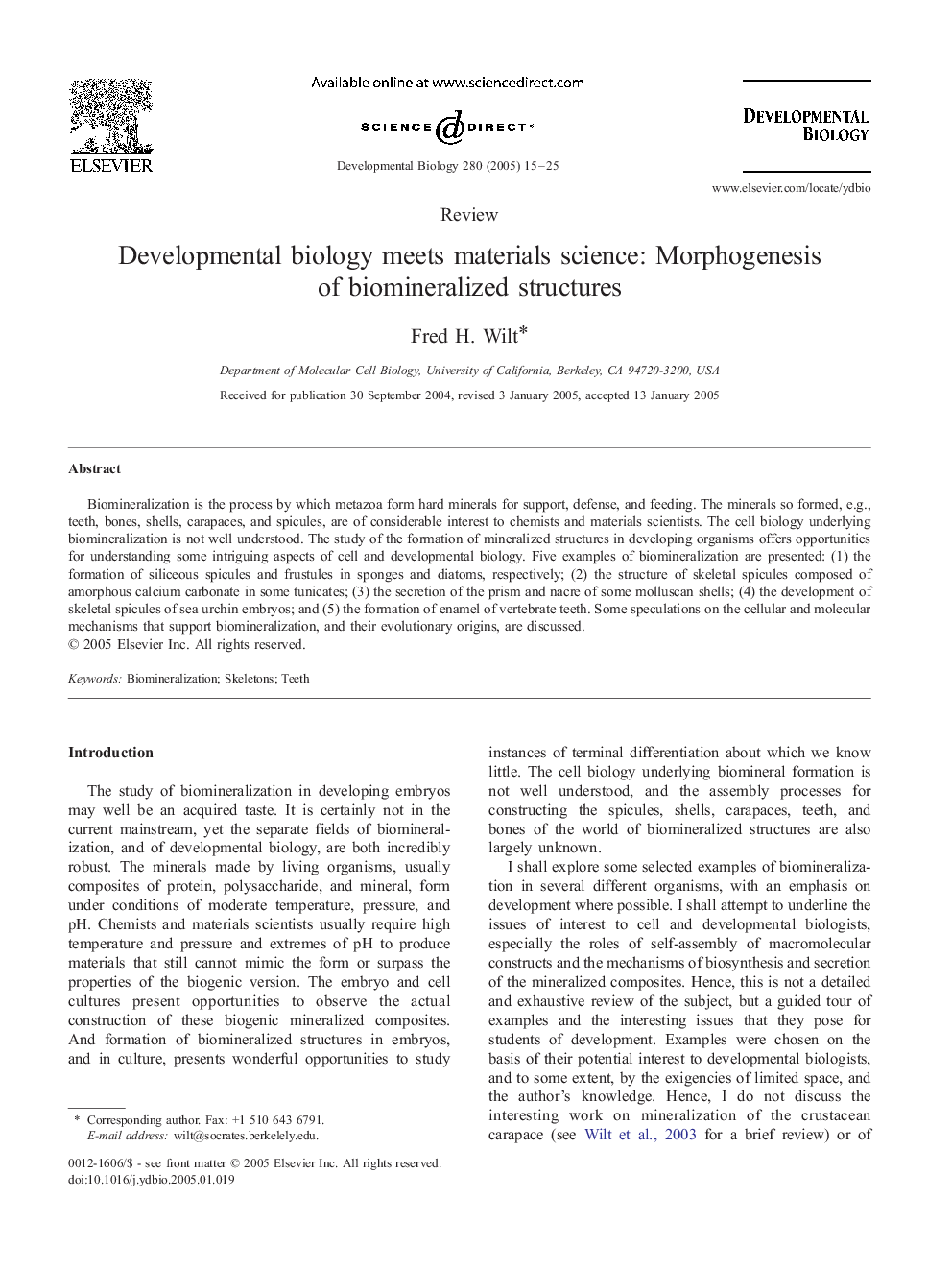| Article ID | Journal | Published Year | Pages | File Type |
|---|---|---|---|---|
| 10934271 | Developmental Biology | 2005 | 11 Pages |
Abstract
Biomineralization is the process by which metazoa form hard minerals for support, defense, and feeding. The minerals so formed, e.g., teeth, bones, shells, carapaces, and spicules, are of considerable interest to chemists and materials scientists. The cell biology underlying biomineralization is not well understood. The study of the formation of mineralized structures in developing organisms offers opportunities for understanding some intriguing aspects of cell and developmental biology. Five examples of biomineralization are presented: (1) the formation of siliceous spicules and frustules in sponges and diatoms, respectively; (2) the structure of skeletal spicules composed of amorphous calcium carbonate in some tunicates; (3) the secretion of the prism and nacre of some molluscan shells; (4) the development of skeletal spicules of sea urchin embryos; and (5) the formation of enamel of vertebrate teeth. Some speculations on the cellular and molecular mechanisms that support biomineralization, and their evolutionary origins, are discussed.
Keywords
Related Topics
Life Sciences
Biochemistry, Genetics and Molecular Biology
Cell Biology
Authors
Fred H. Wilt,
